XM Broker Review (2025): trading conditions, reviews, and comparison with competitors
XM is an international forex broker founded in 2009 that has attracted 10–15 million+ clients from ~190 countries. The company is regulated by several major authorities and is known for reliability. For example, the ForexBrokers portal awarded XM a high Trust Score of 88 out of 99, placing it among trustworthy brokers. Over the years XM has also received industry awards — in 2023 it was named “Most Reliable Broker” and “Most Transparent Broker” globally, underscoring its market reputation.
Contents
- What stands out about XM?
- XM regulation and reliability
- Account types and trading conditions at XM
- Tradable instruments at XM
- Instrument‑specific restrictions
- Fees and costs: how much does trading with XM cost?
- XM trading platforms
- Extra features and services
- Customer service and support
- Opening and verifying an XM account
- XM vs FXPro, RoboForex, AMarkets
- Real‑world experience: trader reviews of XM
- Expert opinions and ratings
- XM FAQ
- Conclusion: is XM worth choosing?
What stands out about XM?
The XM brand (official website — xm.com) offers traders a broad range of services: 1,000–1,400+ instruments (currency pairs, CFDs on stocks, commodities, indices, cryptocurrencies, and more), a low entry threshold from $5, leverage up to 1:1000, and a rich education hub. XM is known for fast, high‑quality execution — 99.35% of trades are filled in under 1 second with no requotes. The company follows its “BIG, FAIR, HUMAN” policy — every client, regardless of deposit size, receives attentive service and Negative Balance Protection. Funds are held in segregated accounts (separate from company funds) at top‑tier banks, and European clients have additional coverage from an investor compensation fund up to €20,000.
XM’s market reputation
Over 15+ years XM Group has proven itself a reliable, client‑focused broker. It is not a bank or a public company, but it holds four Tier‑1 licenses and one Tier‑2 license from leading regulators. XM strictly follows regulatory requirements — reflected in the absence of non‑payment scandals and overall trader trust. Independent assessments show high client satisfaction — Traders Union rates the broker 9/10 based on its conditions and user feedback. On Trustpilot, XM scores ~3.9/5 (“Great”) from 2,200+ reviews — users praise fast withdrawals, convenient platforms, and a broad instrument list, with occasional complaints about bonus terms and slippage. Notably, XM responds to ~94% of negative reviews on public platforms, aiming to resolve issues.
Who is XM for?
With a very low minimum deposit (just $5) and extensive education, XM suits beginners — you can start small and learn via webinars and a demo account. XM has even picked up “Best Broker for Beginners” awards in some regions. At the same time, experienced traders will find competitive spreads (especially on Ultra Low accounts), high leverage of 1:1000 (outside the EU), fast profit withdrawals, and advanced services (VPS for algo traders, loyalty program, dedicated managers for VIPs). XM supports clients from 190+ countries, including the CIS — its website and support are available in Russian and 30+ other languages. It’s a truly global broker with localized support.
To capture the key facts about XM at a glance, here is a concise table of core characteristics:
| Characteristic | XM (XM Group) |
|---|---|
| Founded | 2009 |
| Regulation | CySEC (Cyprus), ASIC (Australia), DFSA (Dubai), IFSC (Belize), FSA (Seychelles) |
| Reliability | Trust Score 88/99 (high); reliability awards (2023) |
| Clients | 15M+ traders from 190 countries |
| Minimum deposit | $5 (Micro, Standard, Ultra Low); $10,000 (Shares) |
| Platforms | MetaTrader 4, MetaTrader 5 (desktop, web, mobile), XM App |
| Instruments | Forex (55 pairs), CFDs on stocks, indices, commodities, metals, energy, crypto‑CFDs (total ~1,200–1,400 instruments) |
| Account types | Micro, Standard, Ultra Low (Micro/Standard), Shares (equities), XM Zero (in some regions) |
| Spreads | From 0.6–0.8 pips (Ultra Low), ~1.6–1.7 pips (Standard); stocks from 0 (market spread + commission) |
| Commissions | None on Micro/Standard/Ultra; XM Zero — $3.5 per 100k per side; stocks ~0.1% per trade |
| Leverage | Up to 1:1000 (international); up to 1:30 (EU/Australia) — per ESMA/ASIC rules |
| Order execution | Market Execution (market fills), no requotes; 99% of orders < 1s |
| Fund protection | Segregated accounts, negative balance protection, investor compensation fund (EU) |
| Bonuses & promos | $30 welcome bonus (in some countries); 50% + 20% deposit bonus (offshore); XMP loyalty; trader contests |
| Support | 24/5 multilingual (30+ languages): live chat, email, phone; dedicated managers for VIPs |
Pros and cons at a glance
- Pros: years of operation and reputable licenses (ASIC, CySEC, etc.), low $5 minimum deposit, tight spreads (from 0.6 pips on Ultra Low) with no commissions, high‑speed execution with no requotes, negative balance protection, no deposit/withdrawal fees, rich research and education (daily webinars, courses), weekday round‑the‑clock support, bonuses and loyalty program for active traders, segregated accounts and EU compensation scheme, wide instrument range (including rarer ones like platinum, palladium, cotton, etc.).
- Cons: $5 inactivity fee (if no activity for >90 days), limited platform choice (MT4/MT5 only — no proprietary terminal), a relatively narrow crypto list (CFDs only, no direct coin purchases), bonuses unavailable to EU/UK clients due to regulation, no PAMM accounts and no built‑in social trading (only via MQL5). Also note spread widening during low liquidity (overnight, news) — normal for variable spreads (e.g., EUR/USD may temporarily widen to ~2–3 pips in high volatility). Otherwise, there are no critical issues like payout delays or interference in trading reported for XM.
XM regulation and reliability
XM Group operates via several entities across jurisdictions, allowing it to serve clients worldwide while complying with local laws. Currently, key XM entities hold licenses from the following regulators:
- CySEC (Cyprus) — license No. 120/10 for Trading Point of Financial Instruments Ltd. The Cyprus Securities and Exchange Commission is a Tier‑1 EU regulator (MiFID II). The CySEC entity serves European clients, ensuring ESMA rules (leverage up to 1:30, investor protection, etc.).
- ASIC (Australia) — Australian Securities & Investments Commission license No. 443670 for Trading Point of Financial Instruments Pty Ltd. ASIC is a top‑tier regulator with strict capital, reporting, and client fund requirements.
- DFSA (Dubai) — Dubai Financial Services Authority licensed Trading Point MENA Limited for the Middle East. The UAE’s DIFC regulator (Tier‑2) is known for tight oversight of financial firms.
- IFSC (Belize) — International Financial Services Commission (license No. IFSC/60/354/TS/19 for XM Global Limited). This is an offshore regulator (Tier‑3 by classification) providing baseline supervision. Via Belize XM serves countries needing more flexible conditions (higher leverage, bonuses, etc.).
- FSC (Mauritius) and FSA (Seychelles) — according to Traders Union, XM also holds licenses in Mauritius and Seychelles. These jurisdictions are used for the international client segment (incl. CIS) and complement XM’s overall regulatory framework.
Holding multiple Tier‑1 licenses (ASIC, CySEC, etc.) is a strong differentiator: per ForexBrokers, XM has four Tier‑1 and one Tier‑2 licenses, placing it among the most regulated brokers globally. What does this mean for a trader? Confidence that the company meets capitalization, segregation, reporting, and transparency rules. For example, client money is held in segregated accounts at reputable banks (Barclays, HSBC, etc.), and European clients of XM are covered by an Investor Compensation Fund up to €20,000, while in Australia the external dispute resolution scheme AFCA is available for complaints.
Negative balance protection applies across XM entities: even in extreme volatility, your account will not go below zero — losses beyond your deposit are absorbed by the company. This is especially important when using higher leverage.
Note that XM is a private company and not a bank — typical for retail forex brokers. The key is licensing by credible authorities. XM is transparent: conditions, fees, and risks are clearly stated, without hidden clauses (hence the “Most Transparent Broker 2023” award). Physical offices exist — Traders Union experts visited XM’s Cyprus office in 2025 and confirmed staff presence at the stated address.
Has XM been cited for violations? Over 15 years, no major scandals have been recorded. Regulators occasionally fine big brokers for technical breaches, but XM has no history of license freezes or mass complaints. Online, some traders mention news‑time spread widening or bonus cancellations upon withdrawal; however, there are no serious fraud allegations. On the contrary, XM is known for consistent payouts — clients confirm funds are withdrawn fairly, subject to standard KYC checks. Reliability ratings reflect this: many reviews give “5/5” for trust, and a Trust Score of 88 signals a high level of confidence.
Regulation — summary
XM is regulated by at least five authorities worldwide, including top‑tier ones (ASIC, CySEC). For traders this means the company plays by the rules, keeps funds safe, and is under supervision. In case of disputes, clients have recourse to a regulator. Such a “license umbrella” is rare among brokers with a $5 minimum deposit — a strong argument for XM as a legal and safe choice for online trading.
Account types and trading conditions at XM
- Micro Account: ideal for beginners and anyone trading very small lots. Minimum deposit $5; the contract size is reduced by 100× (1 lot = 1,000 units of the base currency instead of the standard 100k). This means 0.01 lots on Micro = just 10 units of the base currency, letting you open tiny positions. Variable spreads from ~1.6–1.7 pips on majors. No trading commission. Leverage up to 1:1000 (in most countries outside the EU). Micro accounts let you experience live trading with minimal capital risk — perfect for learning. For example, with a $20 deposit and 1:500 leverage you can control up to ~$10,000 notionally, while one pip on EUR/USD is only ~$0.1 at the minimum size — a safe way to practice.
- Standard Account: a classic account without reduced lot size. Minimum deposit $5; 1 lot = 100,000 base currency units. Variable spreads, ~1.6–1.7 pips on EUR/USD. No commission — the broker earns via the spread. Leverage up to 1:1000 (outside the EU). Suitable for those comfortable with standard volumes. Despite the name, beginners can also open Standard and trade from 0.01 lots; the only difference is there’s no 0.001 step like on Micro. Many experienced traders prefer Standard for familiar contract sizing.
- XM Ultra Low Account: an account with reduced spreads (Ultra Low Spread). Available in two variants:
- Ultra Low Standard: like Standard but with much tighter spreads.
- Ultra Low Micro: like Micro with reduced contract size.
- XM Zero Account: minimal spreads from 0.0 with a fixed commission. Historically XM charged $3.5 per 100k per side (i.e., $7 per full‑lot round turn). Spreads on majors: ~0.0–0.3 pips (near interbank). XM Zero isn’t available in all jurisdictions; in some regions Ultra Low replaces it. If Zero is offered for your region, it suits advanced traders who want the thinnest possible spread. Minimum deposit is also $5; leverage up to 1:500 (previously limited). For precious metals XM does not charge commission even on Zero — e.g., gold can be traded with a ~$0.2 spread and no extra fee. Note: XM doesn’t always publish average Zero spreads publicly (a transparency gap flagged by some reviewers), so many opt for Ultra Low as a simple no‑commission alternative.
- Shares Account: a specialized account for stock trading (via stock CFDs and, recently at XM Global, direct stock purchases). Minimum deposit $10,000; no leverage for real shares (very low for CFDs). Available on MT5. Commission for stock CFDs is about 0.1% per trade (minimum $1 for US, $5 for Europe). That is competitive (many rivals charge $10+). Spreads on stocks are generally market‑like since XM acts as an intermediary. The Shares Account is aimed at experienced investors running larger portfolios; beginners can trade stock CFDs on a standard MT5 account with leverage up to ~1:10–1:20.
Minimum deposit and base currencies. On most XM accounts entry really starts at $5 (or equivalent). You can choose the base currency at registration: USD, EUR, GBP, JPY, CHF, AUD and some locals (HUF, PLN, RUB, ZAR, SGD, etc.). For CIS clients, USD, EUR or even RUB accounts can be convenient (XM supports RUB accounts). You can have up to 8 active accounts per client, so it’s easy to open multiple types and currencies at once. For example, keep a Micro USD account for experiments and an Ultra Low EUR account for main trading. Demo accounts are unlimited.
Leverage at XM
- Clients under the European (CySEC) or Australian (ASIC) entities are limited to 1:30 maximum on forex (as required by ESMA/ASIC for retail clients). This applies to residents of the EU, UK, Australia, and some other tightly regulated regions.
- Clients of international entities (IFSC Belize, FSA Seychelles, FSCA South Africa, DFSA Dubai) can access leverage up to 1:1000. For instance, via XM Global (Belize) you can choose 1:100, 1:200, 1:500, or 1:1000. By default it’s often 1:500, adjustable in the Members Area. Note: very high leverage carries higher risk — XM automatically reduces leverage as equity grows (dynamic leverage). For example, above ~$40k equity the leverage may be lowered.
- Per instrument limits also apply: for volatile assets (crypto) leverage is usually no more than 1:5 or 1:10; for indices up to ~1:100; for metals up to ~1:500 (gold) or ~1:100 (platinum, palladium); for stock CFDs often ~1:5. On Islamic (swap‑free) accounts XM may limit leverage to around 1:100 for long‑held positions to prevent abuse of swap‑free terms.
- Margin Call / Stop Out levels are standard: Stop Out at 50% (EU accounts) and 20% (offshore). Margin Call (warning) generally at 50% margin level.
Spreads and commissions
On Micro and Standard, XM earns only from the spread — commissions are $0. Spreads are variable, changing with liquidity and volatility. Typical averages on core pairs:
- EUR/USD ~ 1.6 pips on Standard (close to the market’s 1.5–1.8) and from ~0.8 pips on Ultra Low.
- GBP/USD ~ 1.9–2.1 pips (Standard) and ~1.0 pip (Ultra).
- USD/JPY ~ 1.6 pips (Standard).
- Gold (XAU/USD) — about $0.30 spread per standard lot on Standard, and ~$0.15–0.20 on Ultra Low.
- Oil (Brent, WTI) — ~5 cents per barrel.
- S&P 500 index (US500) — ~0.7 index points.
- Cryptocurrencies — spreads vary widely: BTC/USD ~ $40–60, ETH/USD ~ $4–5, subject to change; crypto is offered as CFDs only and is unavailable to EU/UK retail clients.
On Ultra Low, spreads are roughly twice as narrow: industry overviews cite ~0.8 pips on majors for Ultra Low vs ~1.6 pips on standard accounts — a meaningful difference for active traders.
Trading commissions: none on all account types except XM Zero and specific instruments:
- XM Zero: $3.5 per 100k per side (i.e., $7 per full‑lot round turn) with minimal spreads (0–0.1 pips). In pip‑equivalent, $7 ≈ 0.7 pips on EUR/USD — total cost ~0.7–0.8 pips per lot. Ultra Low (no commission) is close in value, hence many traders prefer it.
- Stock CFDs: ~0.1% of trade value (minimum $1 for US, $5 for Europe, ~$9 for UK). Spreads are usually market‑like (near 0). For example, buying 100 Apple CFDs for $15,000 costs ~$15 in commission — competitive.
- Crypto‑CFDs: no commission, spread only; mind overnight fees — crypto trades may have higher swaps since markets run 24/7.
- Other instruments: indices, metals, commodities, energy — no commissions, costs embedded in spread.
Swaps (overnight fees): XM credits/debits swaps for positions held overnight, as every broker does. Size depends on interest differentials (FX) or contract costs (CFDs). Example: on EUR/USD, a 1‑lot long might be around -$6…-$10/day, while a short could be +$2…$4 (indicative; values update weekly). On gold, swaps are around -$3/lot/day; on oil about -$5 per contract/day. For stock CFDs, swaps reflect dividends: if you hold a long through ex‑date, the dividend equivalent is debited (and credited on shorts). Islamic (swap‑free) accounts remove swaps; instead, fixed administration fees can apply for positions held more than ~5–7 days.
Spread changes and execution. XM uses Market Execution — orders fill at current market prices without requotes. In normal conditions, >99% of orders are executed in <1 second. During thin liquidity (overnight, holidays) or sharp news, spreads can widen and fills may show small slippage — standard for STP brokers routing to liquidity providers or internal ECN matching. XM reports no dealing‑desk intervention and allows scalping, algotrading, pending orders near price, and hedging. Margin Call and Stop Out on offshore accounts are around 50%/20% (50%/50% in the EU).
Which XM account should you choose? Beginners — start with Micro or Standard with a small deposit. Micro enables micro‑lots and lower risk; Standard also supports small sizes from 0.01. For live strategy testing, a $10–20 Micro is ideal. If you already have experience and plan active scalping or higher volumes, consider Ultra Low — you’ll save on spreads. A 1‑pip difference per trade is significant at scale. Many traders keep both: Standard for swing/position trades (where spread matters less) and Ultra Low for frequent short‑term trades. XM Zero is optional for most (Ultra Low is nearly as cost‑effective). Zero shines for heavy news trading where a 0.1 vs 0.8 pip spread can justify the commission.
Accounts, regions, and limits: As noted, XM lets you open up to 8 accounts per person — handy for separating strategies or base currencies (e.g., a USD and an EUR account to avoid conversion). Multiple profiles under different names are prohibited. Regional restrictions: XM does not serve residents of the U.S., Canada, Israel, Iran, North Korea, and certain sanctioned countries. Clients from Russia, Ukraine, Belarus, Kazakhstan, and most other CIS countries are accepted via XM Global (offshore). They get up to 1:1000 leverage, bonuses, and other perks, while funds can still be held at European banks via the Cyprus entity — a convenient and legal structure.
Swap‑free (Islamic) accounts: If you follow Islam or simply want no swaps, XM can make any account swap‑free. Open an account, upload documents, then request swap‑free status (or tick it during sign‑up). After approval, open positions won’t accrue swaps. To prevent misuse, XM may apply fixed administration fees after ~7–10 days of holding. These are flat fees (not interest), aligning with Sharia. Otherwise, Islamic accounts mirror standard conditions.
Bottom line on accounts: XM offers flexible options for every level. Beginners benefit from micro‑lots and a low entry threshold; pros get tight Ultra Low spreads and no strategy restrictions. The breadth of accounts is a major draw — you can tailor conditions to your style.
Tradable instruments at XM
One key advantage of XM is the wide choice of instruments. XM is a multi‑asset broker offering forex and CFDs across popular asset classes. Here’s what you can trade and the specifics:
- Forex (currencies): XM’s core specialty. The broker lists 57 currency pairs, including all majors — EUR/USD, GBP/USD, USD/JPY, USD/CHF, USD/CAD, AUD/USD, NZD/USD — plus minors and some exotics. Examples: EUR/GBP, EUR/JPY, GBP/JPY, CAD/JPY; rarer pairs include USD/ZAR, SGD/JPY, and even USD/RUB. Spreads were covered above: EUR/USD from ~0.8 pips (UL) / ~1.6 pips (Std), slightly higher on other majors. Forex has the highest leverage — up to 1:1000 (non‑EU). This lets even small balances control meaningful exposure. Use leverage responsibly: many newcomers overuse it and hit Margin Call; XM offers education on risk management in its webinars.
- Precious metals: Trade spot gold (XAU/USD) and silver (XAG/USD), plus CFDs on platinum and palladium (a rare addition). Gold/silver are available against USD with leverage up to ~1:500 (international) and spreads around $0.30 on gold per lot on Standard, ~$0.15–0.20 on Ultra Low. Platinum/palladium typically have lower leverage (~1:100) and wider spreads due to volatility. XM also lists metal futures CFDs, but spot is simpler for most.
- Energy: Brent (UKOIL), WTI (USOIL), natural gas (NGAS), and some gasoline contracts via CFDs (spot or futures). Leverage typically up to ~1:66–1:100. Competitive spreads: Brent ~ $0.05 per barrel; gas wider. Trading runs almost 24h on weekdays with brief clearing breaks. Energy markets are volatile, hence higher margin requirements.
- Equity indices: Access major global indices via CFDs:
- U.S.: US30 (Dow), US100 (Nasdaq), US500 (S&P 500).
- Europe: GER40 (DAX), UK100 (FTSE), FRA40 (CAC), EU50 (EuroStoxx), etc.
- Asia‑Pac: JP225 (Nikkei 225), HK50 (Hang Seng), AUS200 (ASX200), and more.
- Stocks (CFDs): Trade CFDs on 600+ companies — mainly U.S., plus UK, Germany, France, etc. Big names include Apple, Google, Amazon, Tesla, Facebook, as well as European leaders like BMW, BP, Siemens. Available on MT5 (MT4 has no stocks). Leverage up to ~1:5 (EU) or ~1:20 (offshore). Spreads often near 0; commission ~0.1%. Dividends are adjusted on CFD positions (credited on shorts, debited on longs around ex‑date). XM Global has also added direct share dealing (Shares) — real stocks without leverage or swaps and a commission per trade, aimed at investors with larger balances.
- Cryptocurrencies: XM offers crypto‑CFDs on popular coins: BTC/USD, ETH/USD, XRP/USD, plus LTC, BCH, EOS and others — around 30 instruments. Trading runs 24/7 (short Sunday maintenance window). Leverage is limited (often up to 1:5) to mitigate risk. Spreads are wider vs centralized exchanges — e.g., BTC ~$50–100, ETH ~$5–8 — acceptable for short‑term speculation. Crypto is offered as CFDs (no coin custody). Regional limits apply: retail clients in the EU/UK cannot access crypto‑CFDs; CIS, Asia, LATAM clients can via XM Global.
- Commodity futures & softs: Beyond metals and energy, XM lists CFDs on agricultural goods: cocoa, coffee, corn, cotton, soy, etc. Leverage on agri contracts is around ~1:50. Spreads are quoted in ticks — e.g., cocoa 1 tick = $1, spread ~6 ticks ($6). Liquidity is lower than FX; fundamentals (weather, harvests) can drive sharp moves.
- XM specialty products: XM periodically adds new asset types. Reviews mention Thematic Indices and Turbo Stocks:
- Thematic Indices — composite indices grouping stocks by theme (e.g., tech, ESG, EV producers). Spreads are ~2.1 points (Ultra) and ~3.25 points (Standard). Good for expressing sector views.
- Turbo Stocks — XM’s label for higher‑volatility stocks or CFDs with embedded leverage. Details should be checked on the XM website; these cater to experienced traders.
How many instruments in total? Recent figures suggest 1,300+. ForexBrokers mentions 1,394 instruments; Traders Union cites 1,400+. These include:
- 57 FX pairs.
- ~1,000 stock CFDs (thanks to MT5’s broader list).
- ~30 indices.
- 4 metals (gold, silver, platinum, palladium).
- 5–6 energy products (oil, gas and derivatives).
- ~8 soft commodities.
- ~30 cryptocurrencies.
- 5–10 thematic indices and special products.
This puts XM among the more versatile multi‑asset providers. Some rivals list 300–500 instruments; XM exceeds a thousand, approaching multi‑asset platforms. For most retail traders, ~1,300 is more than enough to build diversified strategies.
Instrument‑specific restrictions
- U.S. stocks — available to all clients except U.S. residents (XM does not serve the U.S.). Stock trading is on MT5 only.
- Cryptocurrencies — as noted, unavailable to EU/UK retail clients. If you are an EU resident under CySEC, the crypto section will be empty. Opening offshore accounts when EU‑resident may conflict with rules; check with support. For CIS/Asia — crypto is available via XM Global.
- Trading hours: Forex — 24h from Monday 00:05 (GMT+2) to Friday 23:50 (server time GMT+2/+3 DST). Indices — per underlying markets (U.S. ~16:30–23:00 MSK for the main session, with overnight futures trading on some). Crypto — 24/7. Stocks — by exchange hours: U.S. 16:30–23:00 (MSK), Europe ~10:00–18:30 (MSK). Oil — almost 24h with a ~00:00–01:00 (MSK) break. The platform disables trading when markets are closed.
- Restricted regions: besides countries XM doesn’t serve at all (U.S., etc.), note that if you are an EU citizen living abroad, XM may offer an offshore account; if you relocate to the EU later, you may be moved under CySEC with EU limits.
Bottom line: XM is an “online supermarket” for traders, with currencies, gold, stocks, and bitcoin on one account. If some exotic instrument is missing, it may be added later as demand grows. While XM trails mega‑brokers like IG Markets (17,000+) on sheer count, ~1,300 instruments cover 99% of needs for retail strategies.
Fees and costs: how much does trading with XM cost?
Fee transparency is an XM strength. Here are all potential costs you may encounter.
- Spreads on core instruments. As noted:
- EUR/USD: ~1.6–1.7 pips on Standard, ~0.8 pips on Ultra Low. For reference: at Pepperstone ~1.1 pips; at eToro ~1.8 pips — XM is within a competitive band.
- GBP/USD: ~1.9 pips (Std) vs ~1.0 pip (UL).
- USD/JPY: ~1.6 pips (Std).
- Gold: about $0.30 per standard lot on Standard, ~ $0.15 on Ultra Low.
- WTI oil: ~ $0.05 per barrel (~5–6 points at $80, ~0.06%).
- S&P 500 index: ~0.7 points (at ~4400, about 0.016%).
- U.S. stock CFDs: floating spreads, often <0.1% of price (e.g., Apple at $150 might have a $0.10–0.20 spread). Main cost is commission.
- Bitcoin: ~$50–100 spread (at $30k that’s ~0.2–0.3%). Centralized exchanges charge ~0.1–0.2% commissions, so XM is slightly pricier but convenient.
Overall, XM’s FX spreads are market‑typical or better depending on account type; Ultra Low is markedly tighter. Indices and commodities are often very competitive with no commissions.
- Trading commissions. XM follows a largely “commission‑free” model:
- No per‑trade fees on Micro, Standard, Ultra Low — the spread includes costs.
- XM Zero — $3.5 per 100k per side; spreads near zero.
- Stock CFDs — ~0.1% (min $1–5) per trade.
- Other instruments (indices, oil, metals, crypto) — no commissions.
- Non‑trading fees — see below (withdrawals, inactivity, etc.).
So for 90% of traders, costs = spread. XM says it avoids hidden markups and offers near‑market pricing.
- Swaps (overnight). An indirect cost driven by rates/exchanges:
- FX: swaps reflect interest differentials + broker margin. With higher U.S. rates vs euro, a 1‑lot EUR/USD long might be -$5–6/day, short +$1–2 (illustrative).
- Stocks: longs pay ~dividend yield (shorts receive), net of fees; XM references LIBOR‑like benchmarks ± margin plus dividend adjustment.
- Crypto: swaps can be significant (brokers hedge 24/7 risk), making long holds less attractive.
- Islamic clients: no swaps, but fixed administration fees on longer holds; XM lists fees per instrument.
Check current swaps in the platform: Market Watch → right‑click instrument → Specifications → Overnight Fee.
- Funding and withdrawals. Good news: XM charges no fees for deposits/withdrawals. Card, e‑wallet, bank wire — fees from payment systems are typically covered by XM. Caveats:
- Small bank wires (<$200) — banks may charge ~$20–30; XM historically covers fees above certain thresholds; small wires may not be reimbursed. Prefer bank wires for larger amounts.
- Currency conversion — if your account and payment currency differ, the bank/PSP applies its FX rate (1–2% spread is common). Consider matching account currency to your funding method.
- Crypto — XM does not accept/withdraw crypto; fiat only.
- Internal transfers — cross‑currency transfers incur conversion; for large amounts, funding/withdrawing in matching currencies can be better.
Anti‑money‑laundering rules require withdrawals to follow the funding path: card deposits are returned to the same card up to the deposited amount; profits are sent via bank wire or e‑wallet per policy.
Payout speed: XM typically processes within 1 day. E‑wallets often receive funds the same day (within hours). Cards: 1–3 business days (up to 5). Bank wires: 2–5 days. Many reviews note very quick e‑wallet withdrawals. XM does not deduct a withdrawal fee — you receive what you request.
- Inactivity fee. If an account is inactive for 90 days, XM marks it inactive and charges $5/month until activity resumes or the balance is zero. If the balance is $0, the account is simply frozen. To avoid the fee, make any operation at least once per quarter (a trade or a small deposit/withdrawal).
- Other fees: No hidden account maintenance fees, no platform fee, no charge for leverage usage beyond swaps. No deposit/withdrawal fees, no fees for verification or profit withdrawals. Cross‑currency P&L conversions are handled by MT5 automatically with minimal spread.
XM vs competitors (spreads & fees):
- XM vs FXPro: FXPro Standard ~1.4 pips EUR/USD (no commission), slightly better than XM Standard (1.6 pips) but with a higher minimum deposit (~$100+). XM Ultra Low ~0.8 pips (no commission) rivals FXPro Raw+ (~0.4 pips + $9/lot ≈ ~1.3 pips). XM can be cheaper for smaller accounts.
- XM vs RoboForex: Robo Pro ~1.4 pips (no commission), min $10; leverage up to 1:2000 but lighter regulation. Robo ECN: 0 spread + ~$20/lot (pricier than XM Zero). XM’s no‑fee funding is also a plus vs mixed Robo reimbursement rules.
- XM vs AMarkets: Standard from ~1.3 pips (avg ~1.5); ECN from 0 + $5/lot round turn. Fee‑free withdrawals under conditions. Overall pricing is similar; XM has stricter oversight.
- XM vs Pepperstone/Exness: Pepperstone Razor 0 + $7/lot; Standard ~1.1 pips. Exness Standard ~1.2 pips. XM Standard is higher (~1.6), but XM Ultra Low (~0.8, no commission) narrows the gap — competitive for active traders.
Noteworthy: XM doesn’t nickel‑and‑dime for extras — no fee for small deposits, no fee for unused leverage, no account closure fee. The pricing is straightforward.
Cost example: Suppose you trade 1 lot EUR/USD on Standard and make 10 trades/month at an average spread of 1.7 pips. Cost: 1.7 pips × $10 (pip value per lot) × 10 = $170. No other commissions. On Ultra Low at ~0.9 pips, cost ≈ $90 — a clear saving. If half the trades are held overnight, add swaps: say ~$6 × 5 = $30. Total ~$200. On a commission model, the same 10 lots might cost ~$70 in commissions plus a near‑zero spread — differences exist, but XM remains cost‑effective for most retail traders, especially with bonuses/loyalty that can offset part of the spread.
Bottom line on costs: XM follows a “no hidden fees” approach. Your main expenses are spread and swaps; the rest is absent or avoidable. Pick the right account (e.g., Ultra Low for frequent trading) and XM can be very economical.

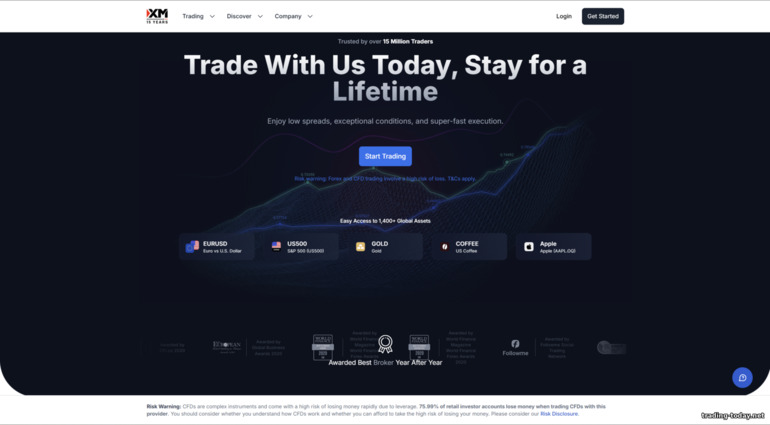

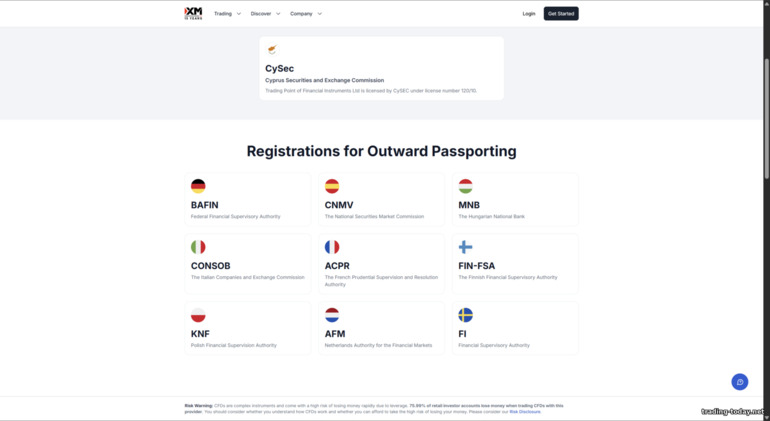
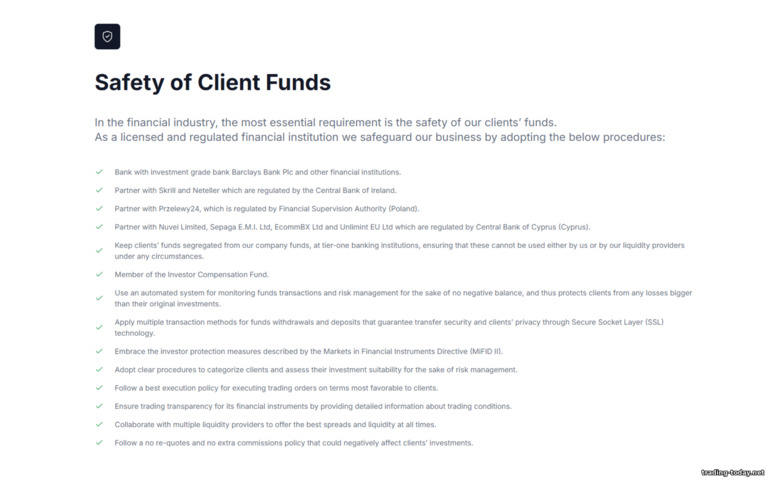
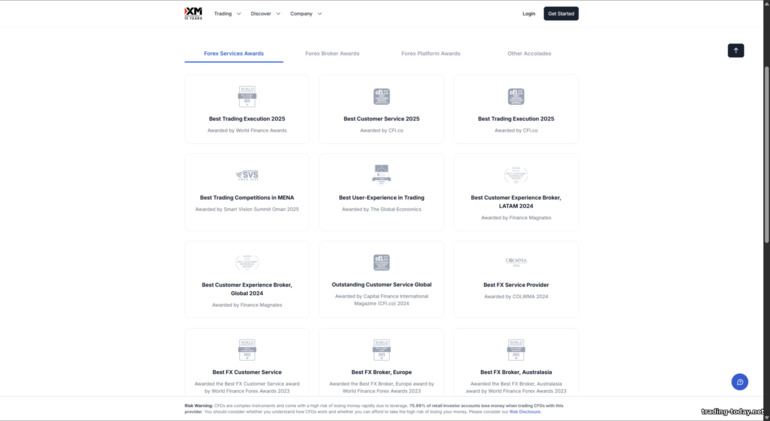
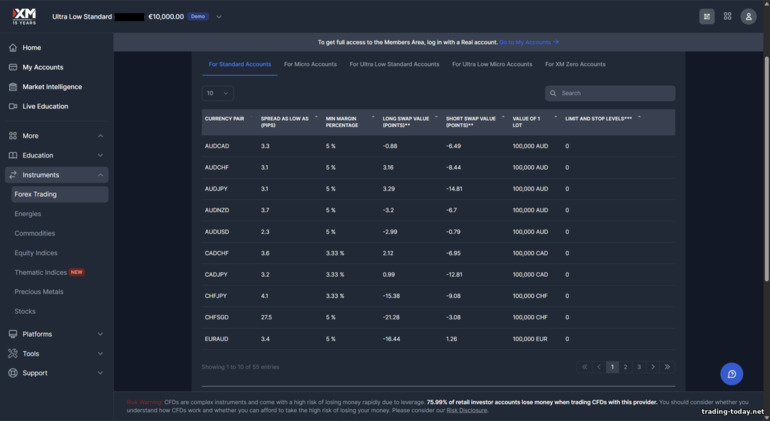
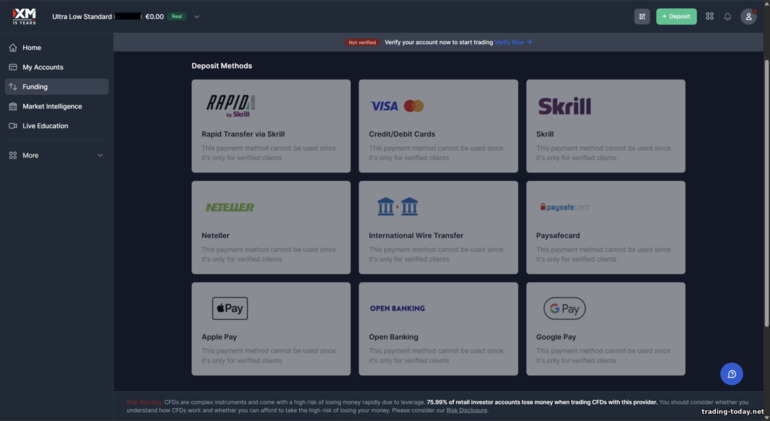


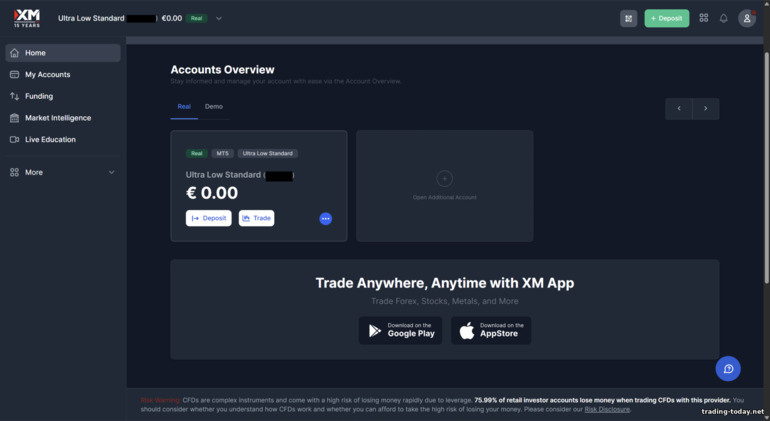
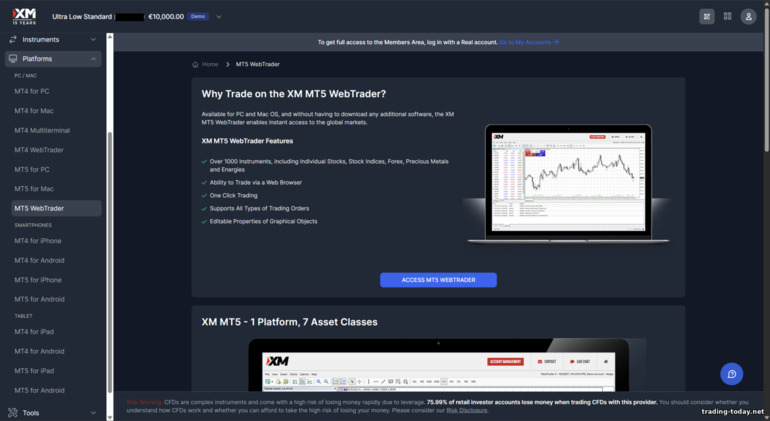

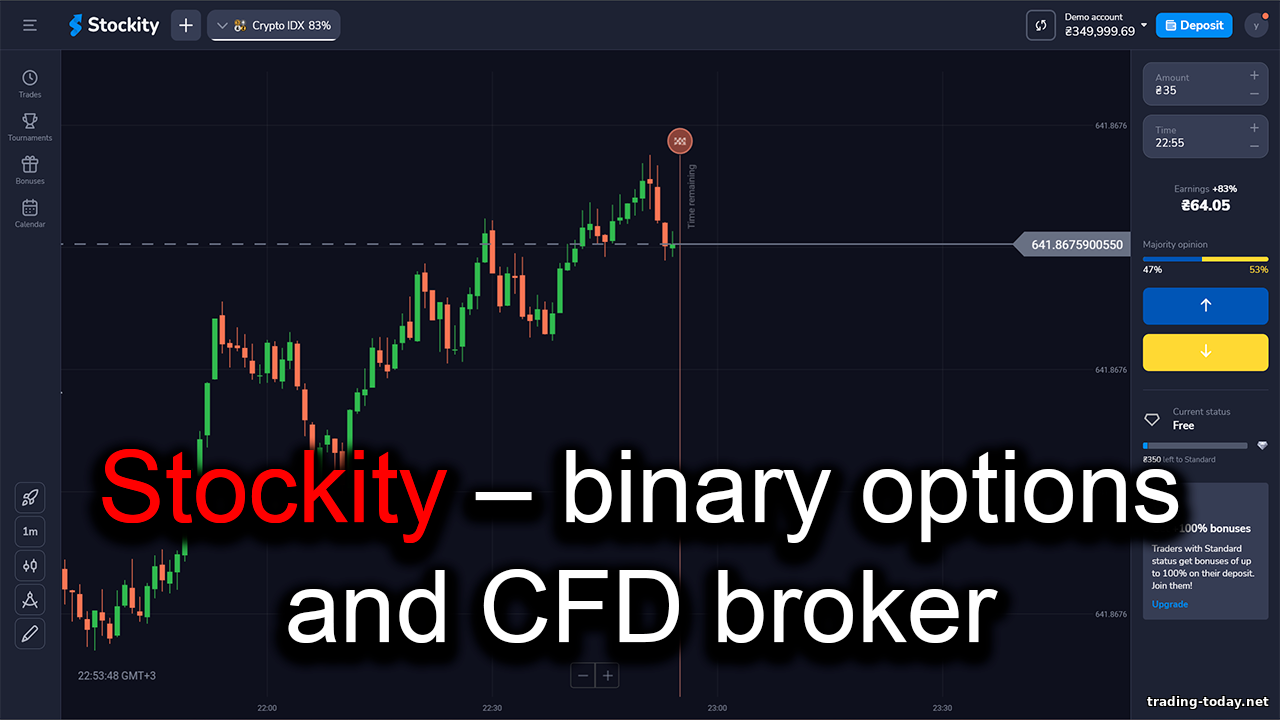

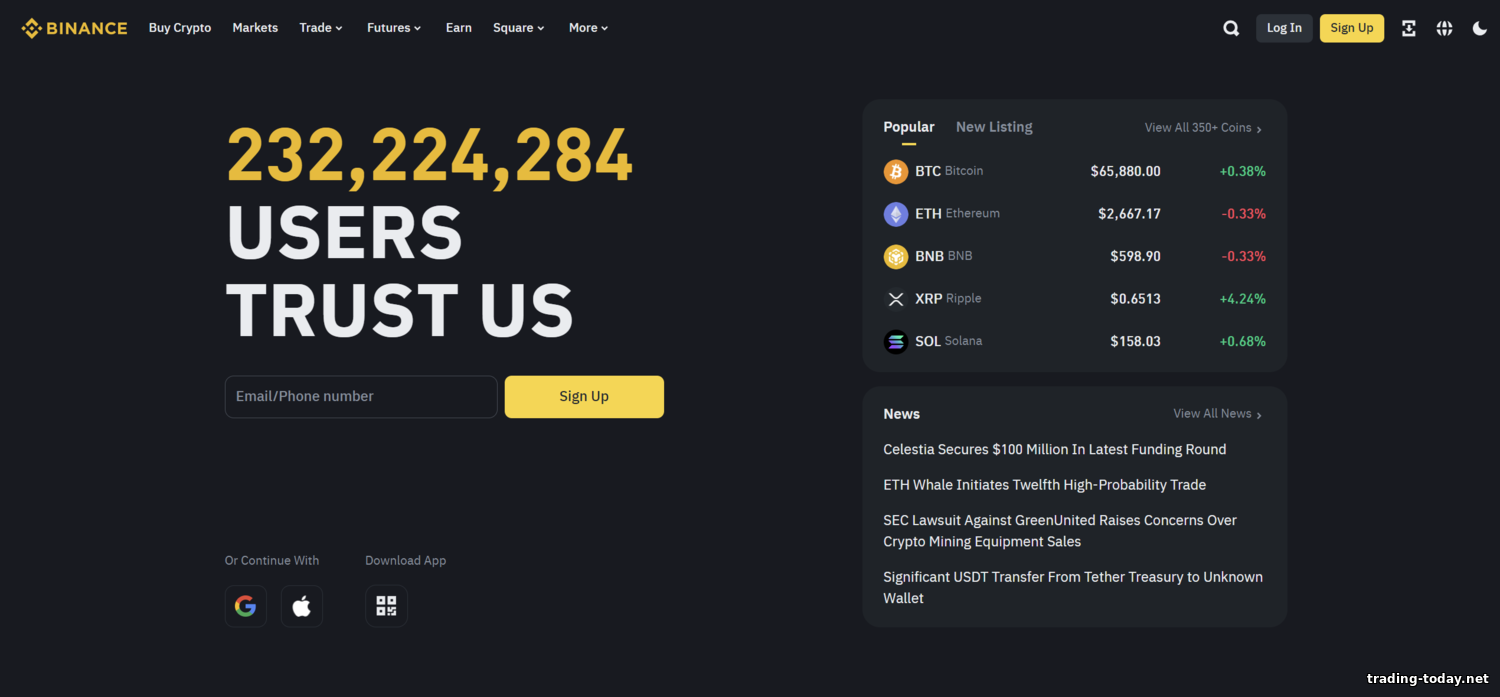



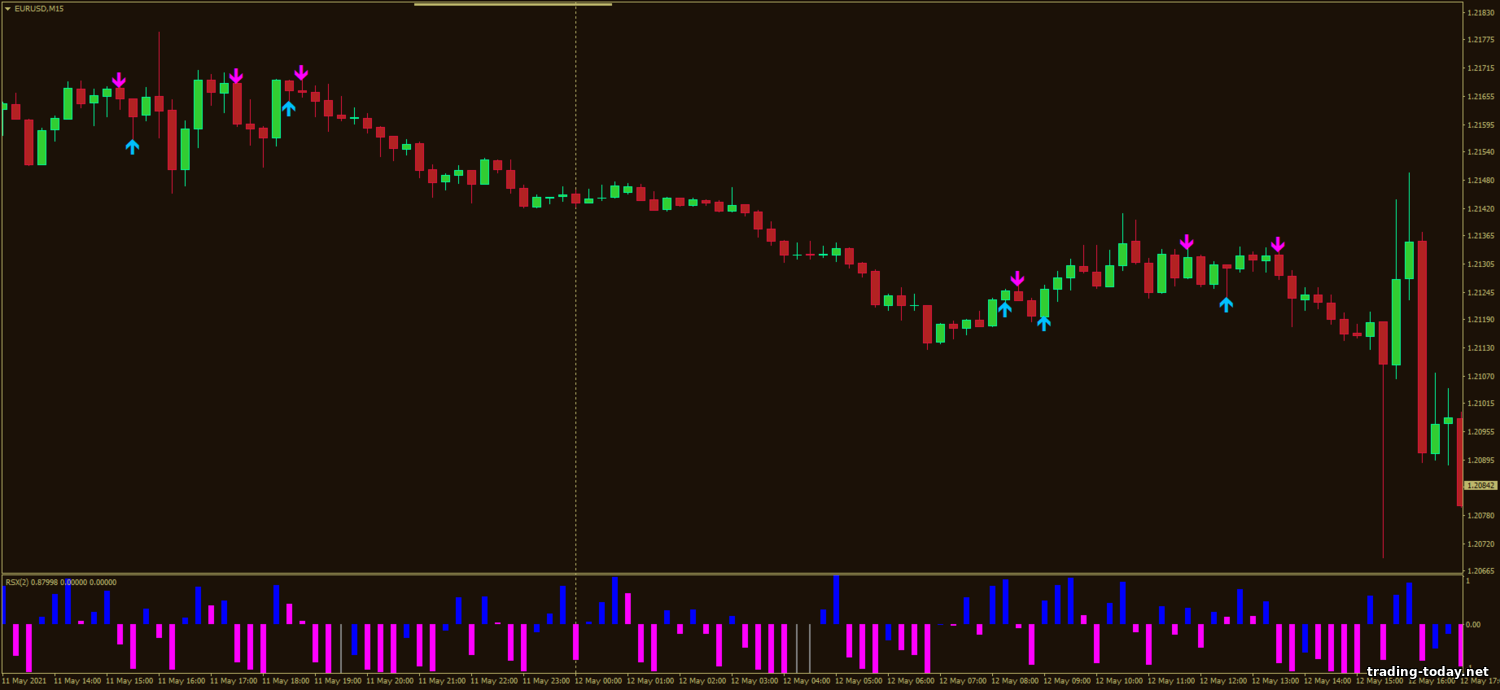
Reviews and comments